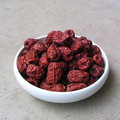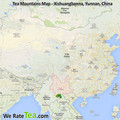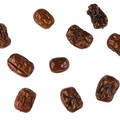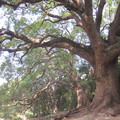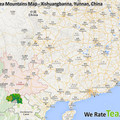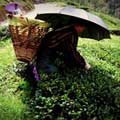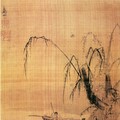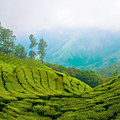Pu-erh tea
„To produce pu'er, many additional steps are needed prior to the actual pressing of the tea. First, a specific quantity of dry máochá or ripened tea leaves pertaining to the final weight of the bingcha is weighed out. The dry tea is then lightly steamed in perforated cans to soften and make it more tacky. This will allow it to hold together and not crumble during compression. “
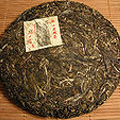
Quotes Tags: Pu-erh
- Discussion: 0 comments
- Write a comment
Teas - Pu-erh
2007 Longyu Brand Bulangshan Jin Cha Ripe
 1 review
1 reviewJin Cha(mushroom) is especially for Tibetan market, used to be mixed with milk, it is...
2012 EoT Bulang Puer Tea 400g
 1 review
1 reviewThis tea was a bit of an experiment for us. We'd found 2 different maochas from Bulang...
HeKai 2013 - blind tasting set 2
 1 review
1 reviewnicely balanced bitterness with a breze of sweetness, beautiful honey-fruity aroma,...
2003 CNNP "Yi Wu Old Tree Round Cake" Raw
 1 review
1 reviewProbably a small tea factory in Yi Wu area pressed this cake under the "zhong cha"...
2014 Laos Ban Komaen (Blue) Gu Shu Raw
 0 reviews
0 reviewsPhôngsali is a province of Laos, bordering Yiwu, Yunnan. It is located high in the...
YouLe 2013 - blind tasting set 6
 1 review
1 reviewdense, rich, bitter-sweet, fruity aroma, full body floods the whole mouth and gives a...
Quotes - Pu-erh
„Ku Cha; 苦茶 - Bitter Tea. The tea from a variety of tea tree (Camelia Sinensis Assamica var.Kucha) found in an area around Mensong.“
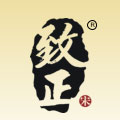
Quotes Tags: China, Experiencing tea, Pu-erh
Video - Pu-erh
Theme
Teas
2014 White2Tea New Amerykah 2
 1 review
1 reviewAn old arbor Menghai blend. Thick body, lingering kuwei [pleasant bitterness], and plenty of oomph. This...
2013 Chawangpu "Shuang Shu" Xiao Bing Cha
 1 review
1 reviewThis is the first time we made blending raw puer cake, so we took advice from a more experienced tea...
2013 Zhejiang Long Jing Hong Cha AAA Grade
 1 review
1 reviewMaterial came from the same tea trees with Longjing green tea. The dry tea leaves are rolled tightly and...
Tea by region
We will help you with tea selection.
Do you like quality loose tea?
We will help you to find the right one for you. Be inspired by tea ratings of other tea lovers. Rating stars could help you.


Review your cup of tea.
Review the tea you are drinking and help other tea lovers to find the right cup of tea.






 Shops
Shops Share on Facebook
Share on Facebook






